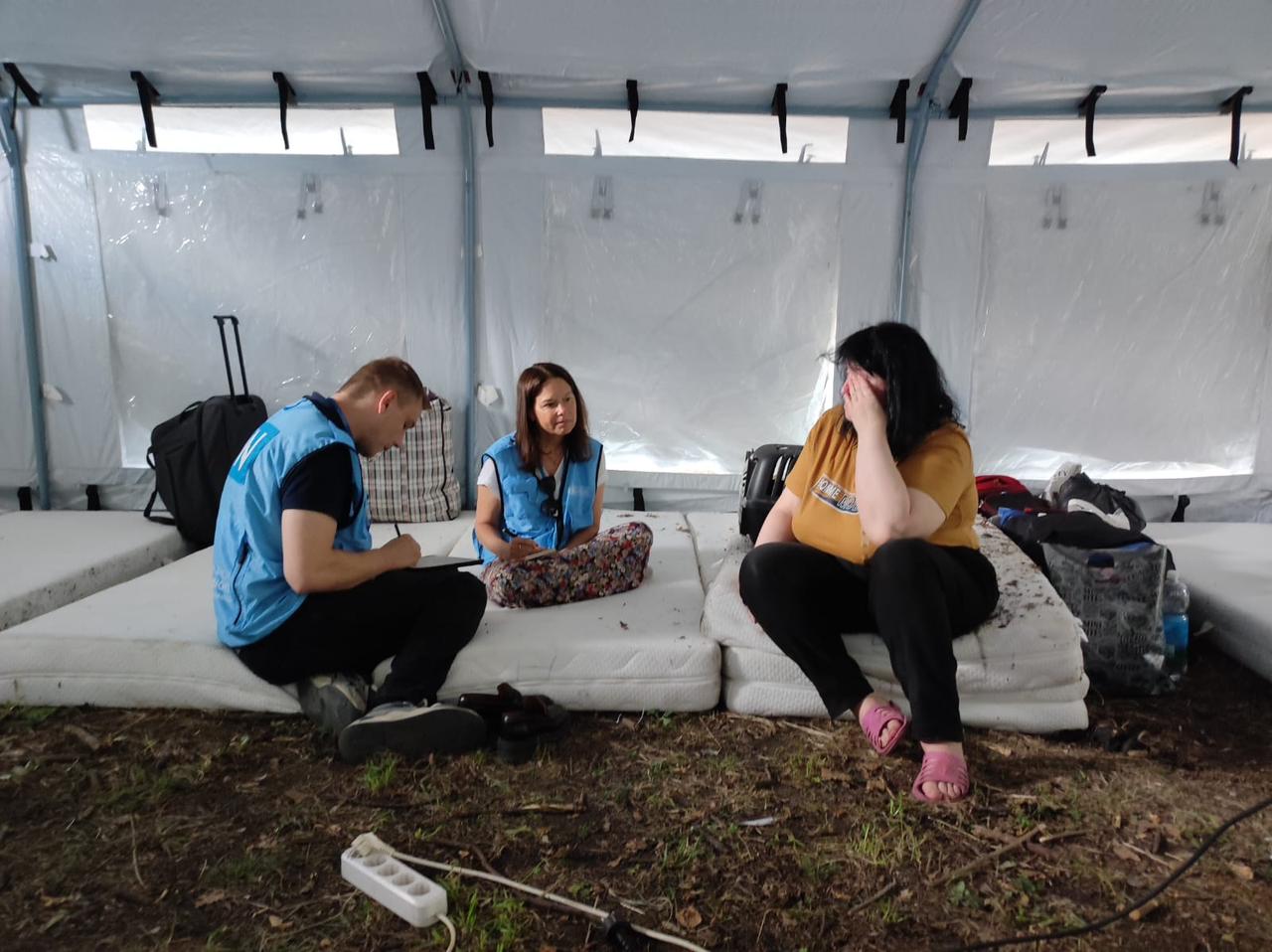Kyiv, 18 August 2025 – Intensifying hostilities along Ukraine’s frontline are killing and injuring civilians, destroying vital infrastructure, halting essential services, and forcing new waves of displacement, with older persons and people with disabilities particularly affected, the UN Human Rights Monitoring Mission in Ukraine (HRMMU) said today.
In 2025, over 60 percent of all civilian casualties occurred in frontline areas, mainly due to artillery shelling, MLRS strikes, aerial bombs, and short-range drones. July recorded the highest monthly toll since May 2022, with the majority of civilian casualties occurring in frontline regions. This sharp increase is largely linked to the intensified use of aerial bombs and short-range drones. July saw the highest number of civilian casualties from short-range drones since the start of the full-scale invasion, with 64 killed and 337 injured, while casualties from aerial bombs more than doubled compared to June, rising from 114 to 276.
In villages and towns near the frontline, civilians are finding it increasingly difficult to access basic services such as pharmacies, healthcare, public transport, education, and utilities. Intense drone attacks mean that only limited repairs to damaged water pipes or electricity lines are possible.
“In many frontline villages, older persons and people with disabilities are living without medicine, electricity, or even clean water,” said Danielle Bell, Head of HRMMU. “Intensifying short-range drone attacks and the coming winter are compounding fear and hardship, disproportionately affecting those most vulnerable.”
With the frontline edging closer, many cities and villages, such as Bilozerske and Dobropillia in Donetsk region, have experienced intense attacks over the past two weeks. In Bilozerske, the local hospital closed down last week, along with pharmacies and banks. Only non-potable water is available, and the electricity supply is frequently interrupted.
Most of those remaining in frontline villages are older persons who face disproportionately high risks of being killed or injured. HRMMU documented that people aged 60 years and above accounted for over 43 percent of the civilians killed in frontline areas in 2025, despite representing only 25 percent of Ukraine’s general population.
For example, on 27 July, a short-range drone struck a passenger bus near the village of Ivolzhanske, Sumy region, killing three older civilian women, aged 67, 75, and 79, and injuring at least 17 civilians.
Despite ongoing evacuation efforts, resources are increasingly stretched, making it very difficult to respond to the growing number of people fleeing frontline areas. NGOs leading these efforts face not only severe funding shortfalls but also rising security risks, with many workers reporting that drone attacks appear at times to deliberately target them. Thousands have left recently, many passing through a transit center in Pavlohrad, Dnipropetrovsk region, which was built to accommodate 100 people but, in recent weeks, has received nearly 400 in a single day.
“I don’t care where I go, as long as there is no bombing because I can’t tolerate it anymore,” said a 64-year-old man with a physical disability who had just fled Bilozerske and was staying in the transit center while waiting to be relocated further.
While HRMMU recorded fewer civilian casualties in frontline areas under occupation in July and August, recent evacuees described growing fear in villages less than 15 kilometers from the frontline. They reported a sharp increase in drone activity, spreading fear among residents. One woman who relocated from an occupied frontline village told HRMMU: “Every day, there are more drones than stars.”
Evacuation from frontline areas remains critical, yet current efforts to meet the growing demand, particularly for older persons and people with disabilities, often face additional challenges securing long-term housing arrangements once displaced. “Living costs in safer areas are high, and older evacuees often rely on modest pensions, making private housing unaffordable,” Bell said. “As a result, some end up staying in collective centers for extended periods. For persons with disabilities, the lack of accessible and affordable housing continues to be a major barrier to living independently in the community.”
August has brought no reprieve for civilians. Although long-range weapon attacks initially decreased, casualties in frontline areas remained high. For instance, on Sunday, Novoiakovlivka, Zaporizhzhia region, located around eight kilometers from the frontline, was struck by aerial bombs, killing a 15-year-old boy and injuring six civilians, including the boy’s parents and siblings. Long-range strikes resumed on 18 August, causing multiple civilian casualties in Kharkiv – reportedly seven killed and 23 injured, including children – and in Zaporizhzhia, where three were reportedly killed and 33 injured.

